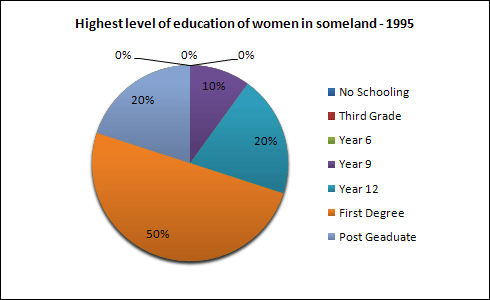
How to Do IELTS Writing Task 1 With Only One Chart?
IELTS writing task 1 in the Academic module is of different types out of which bar chart or line chart is quite a common task candidates may find in the exam. There are basically two types of charts you may come across. In one type, you find only one chart while in the other type, you may find two or more charts. The first one is the easiest question you get in IELTS writing task 1. Let us see in detail how to solve this type of question:
Step 1: Read the Question and Write Introduction
The first step you can follow to do IELTS writing task 1 with only one chart is to read the question properly. There is always a brief statement about the question written alongside the chart, it is extremely important to read it because that will help you to write introduction well for which you can simply paraphrase the question statement and along with this, you can also use the units and other such additional information written in the diagram. Thus, before writing instruction, give a stare at the chart heading, x-axis and y-axis.
Step 2: Analyse the Diagram to Find Key Features
After writing introduction, you can analyse the chart well to look for key features. Key features are the most important things to mention in the IELTS writing task 1 in order to score high. In the diagram with only one chart, you can notice the highest and lowest figures. If there are some similarities or differences between two charts, you can mention that as well. For example, if the two bars in the chart are at the same level, it would be a good key feature to mention.
Step 3: Write Body Paragraph
After noticing the important features, you can write body paragraph where you can logically mention them using connectives and you can mention the appropriate figures as well as units in support of the features you are writing. In IELTS writing task 1, for a simple question with one chart, you will not find a lot of key features and hence, you may like to write only one body paragraph. However, you can divide your paragraph into two if it becomes too long in case you get more details in the chart.
Step 4: Write Main Conclusion
At the end or after writing introduction in IELTS writing task 1, you can write the main conclusive feature of the chart diagram. It should not be lengthy like a body paragraph and therefore, you may write it in 2-3 lines of your sheet. For drawing out conclusion in IELTS writing task 1, there is a tip you may use. You can consider the key features by looking at the chart at a distance and list out the major peaks in the diagram. For example, if you look at the chart, you may see there is a big bar and a small bar that look significant as the major outcome of the chart and hence, you may write about them in the conclusion.




